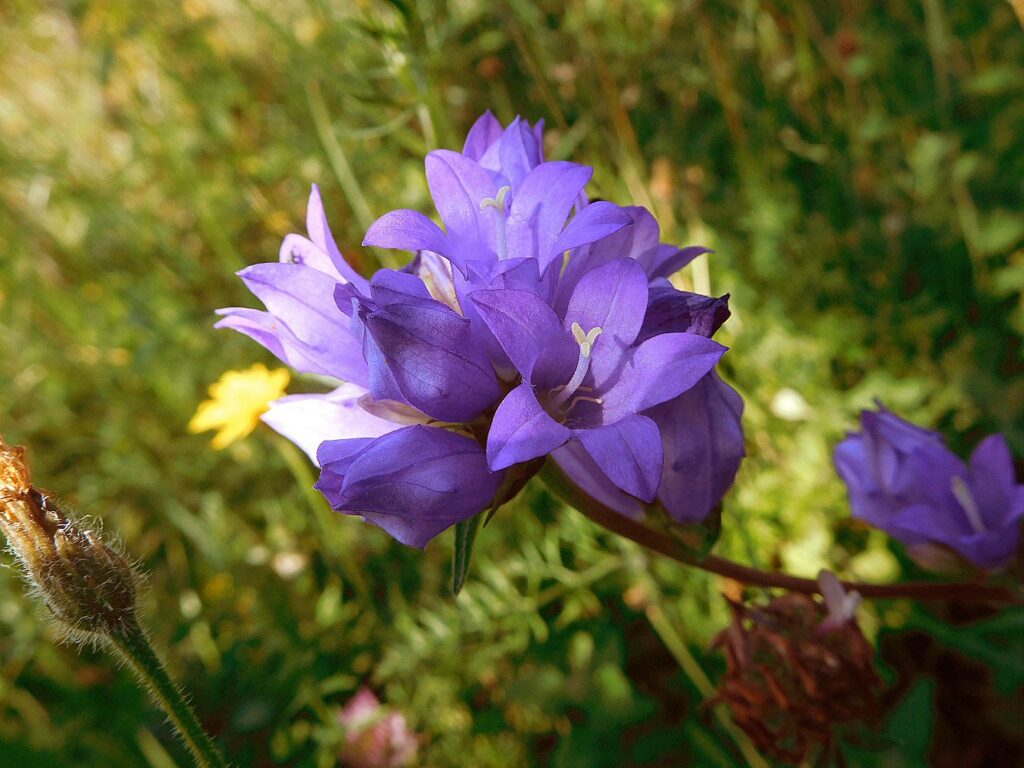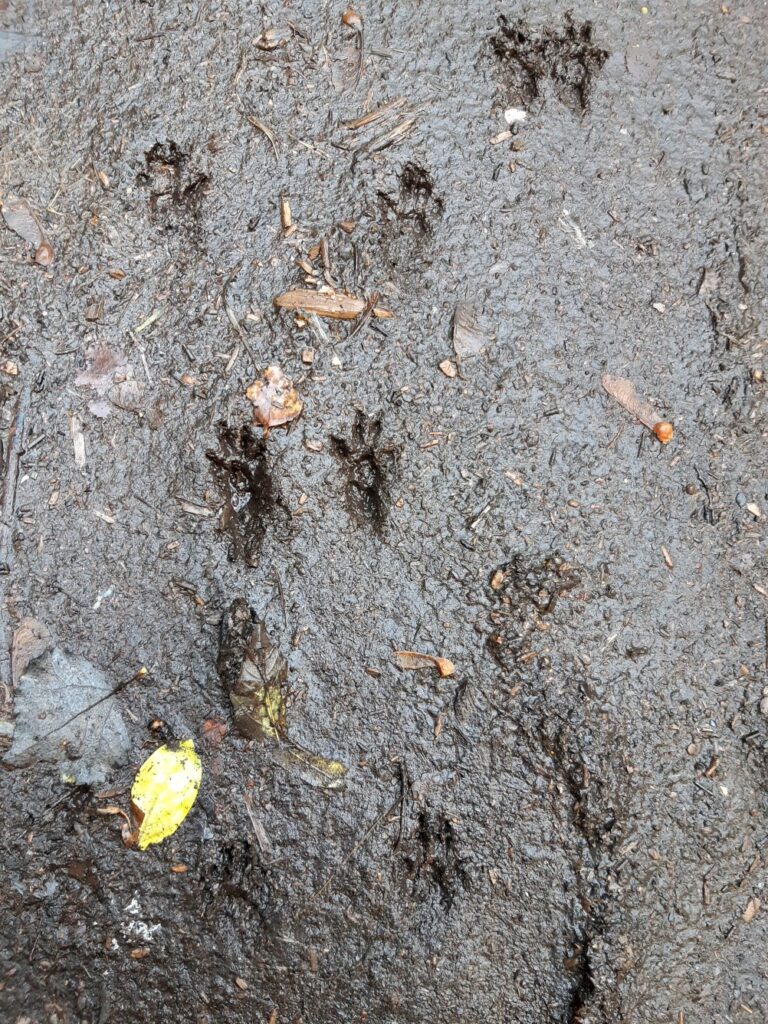
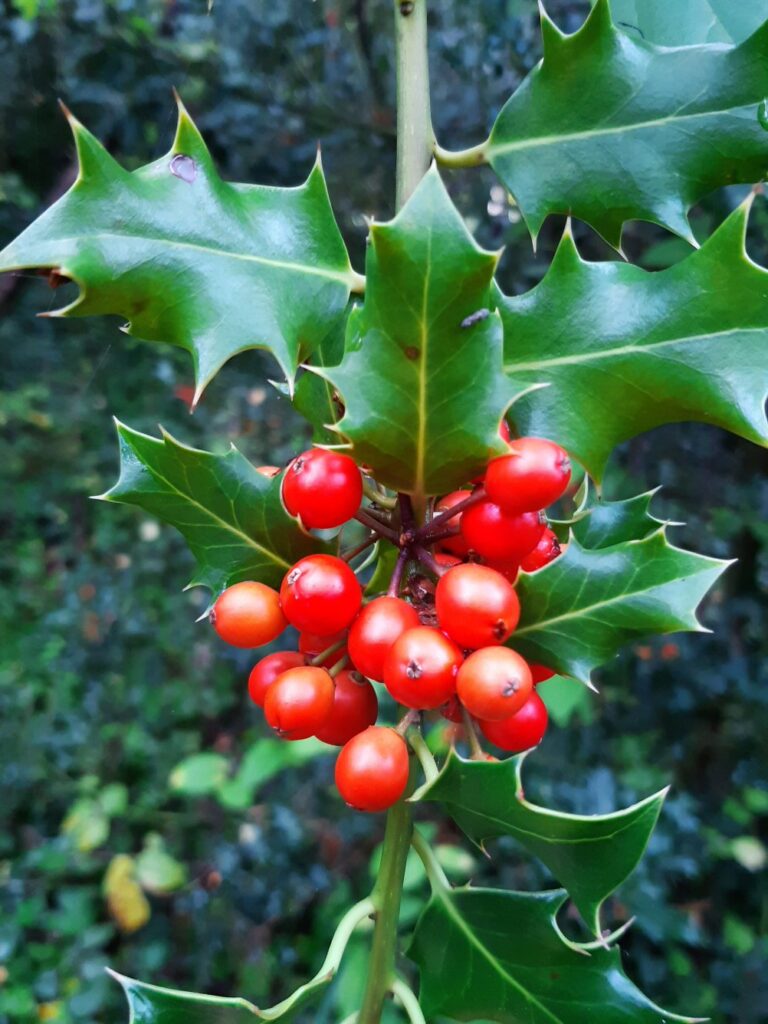
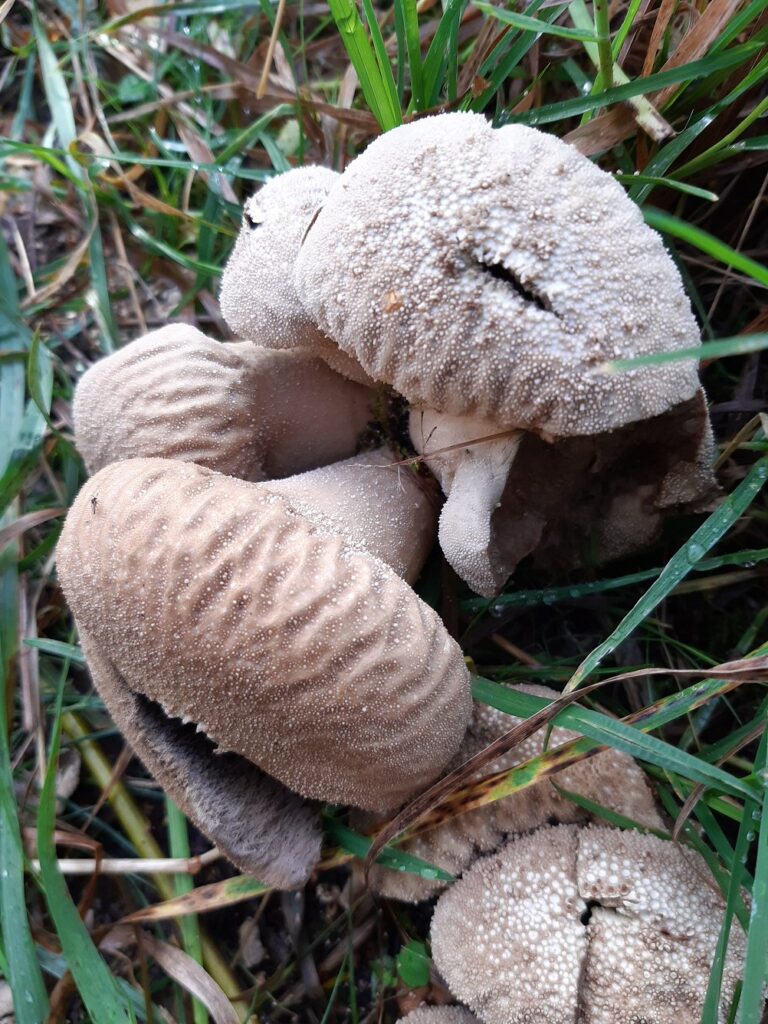



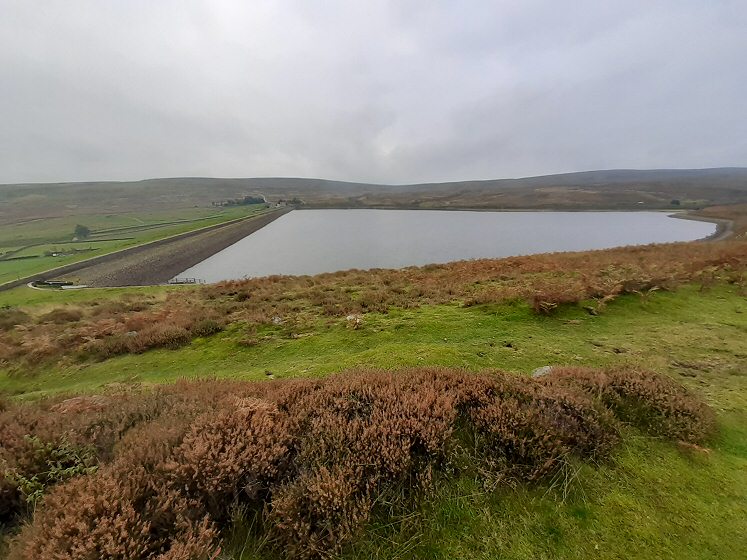
Barden Moor is an extensive water catchment area, on acidic rock (Millstone Grit), providing soft drinking water to the city of Bradford. The area is part of the ancient Bolton Abbey estate, and is now also in the Yorkshire Dales National Park. It’s covered in heather and moorgrass with areas of meadow and bog pools. It’s a fine place for an open airy walk away from the sometimes busy mountaintops, and a wonderful spot for nature.
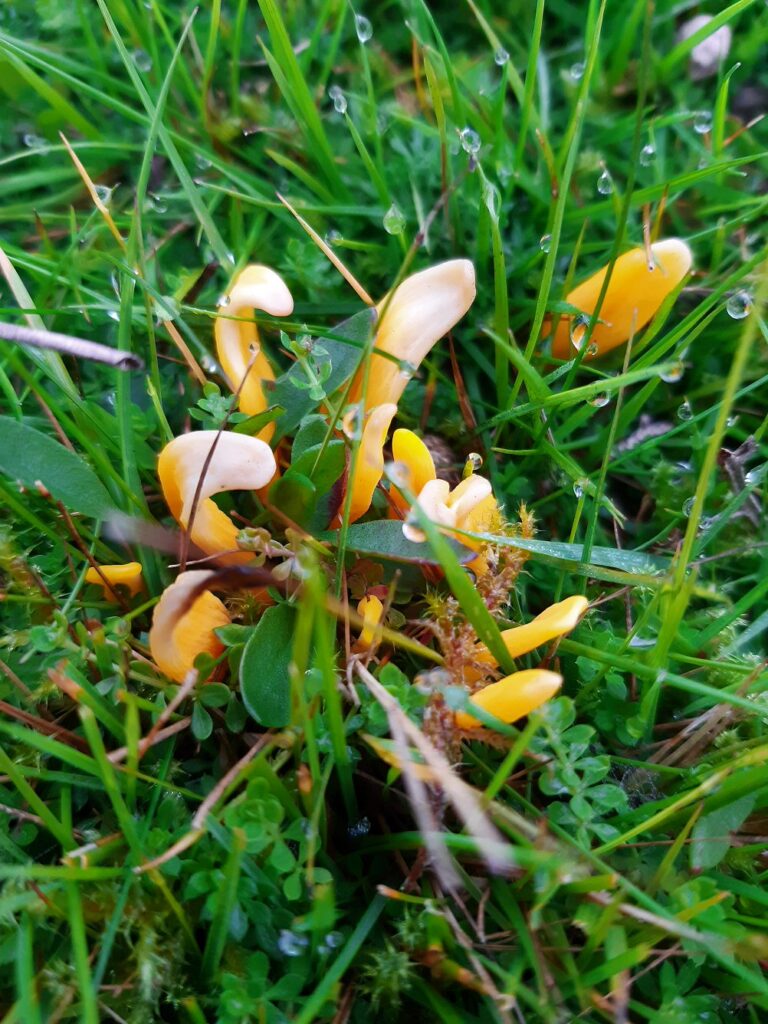
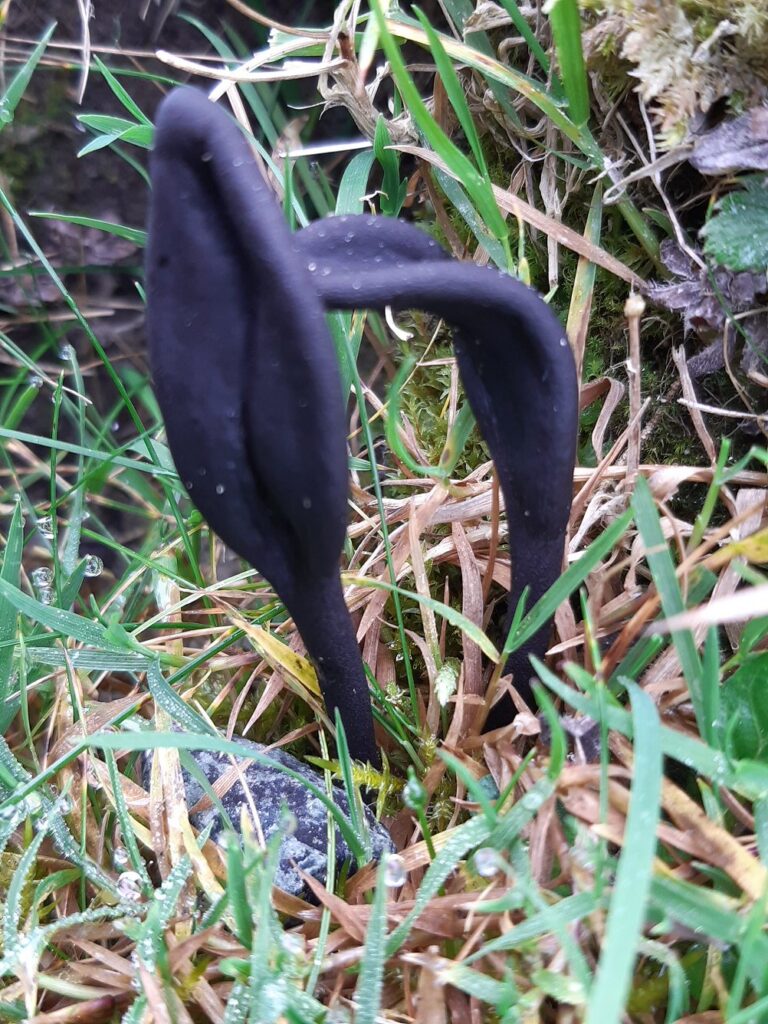
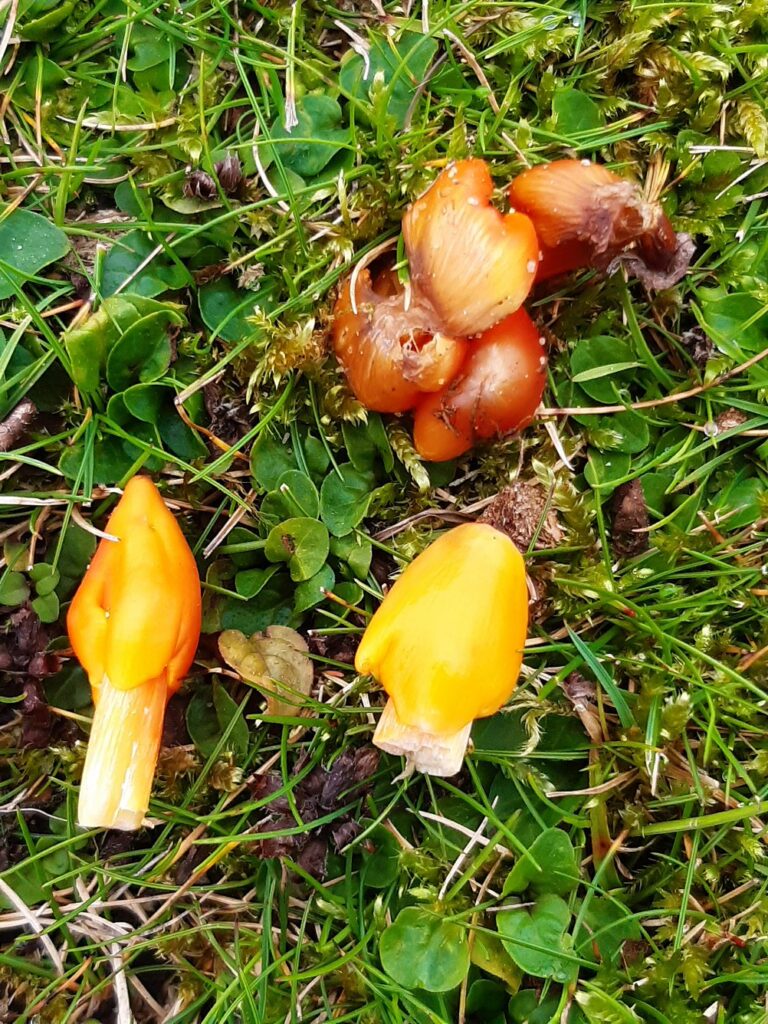
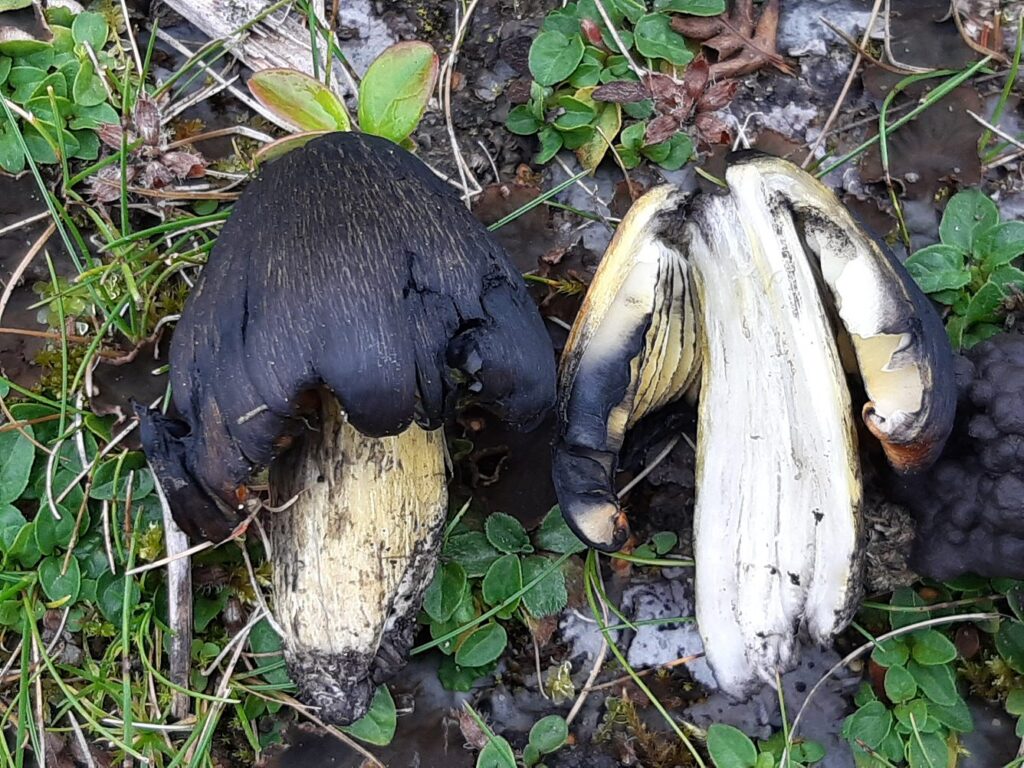
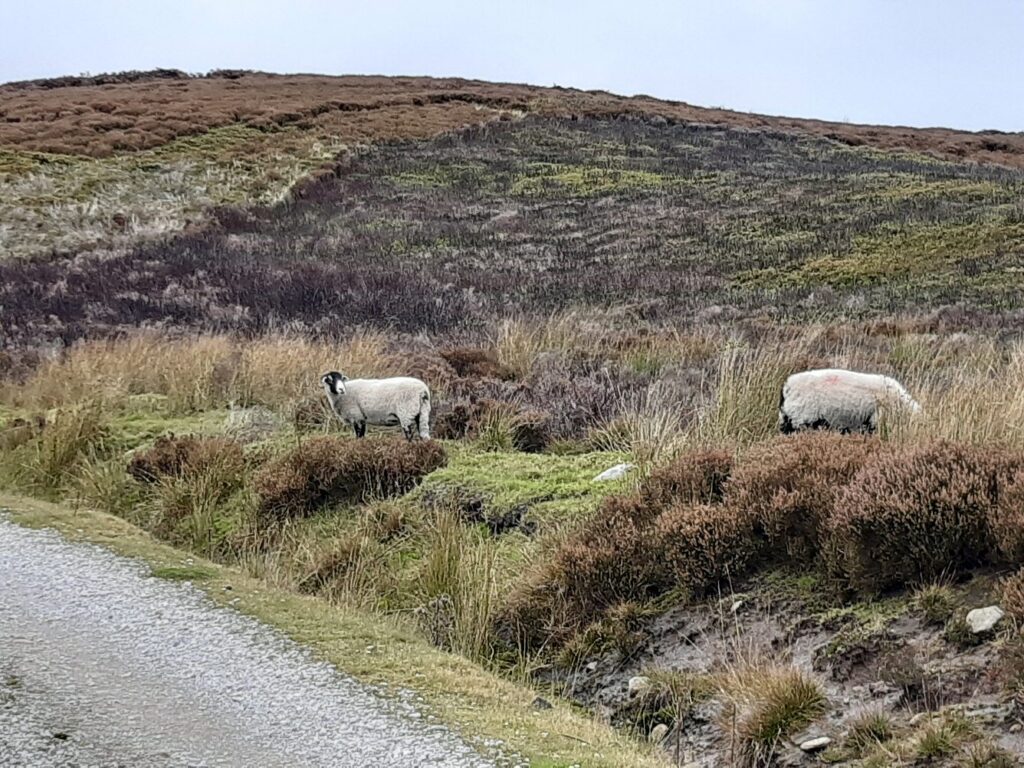
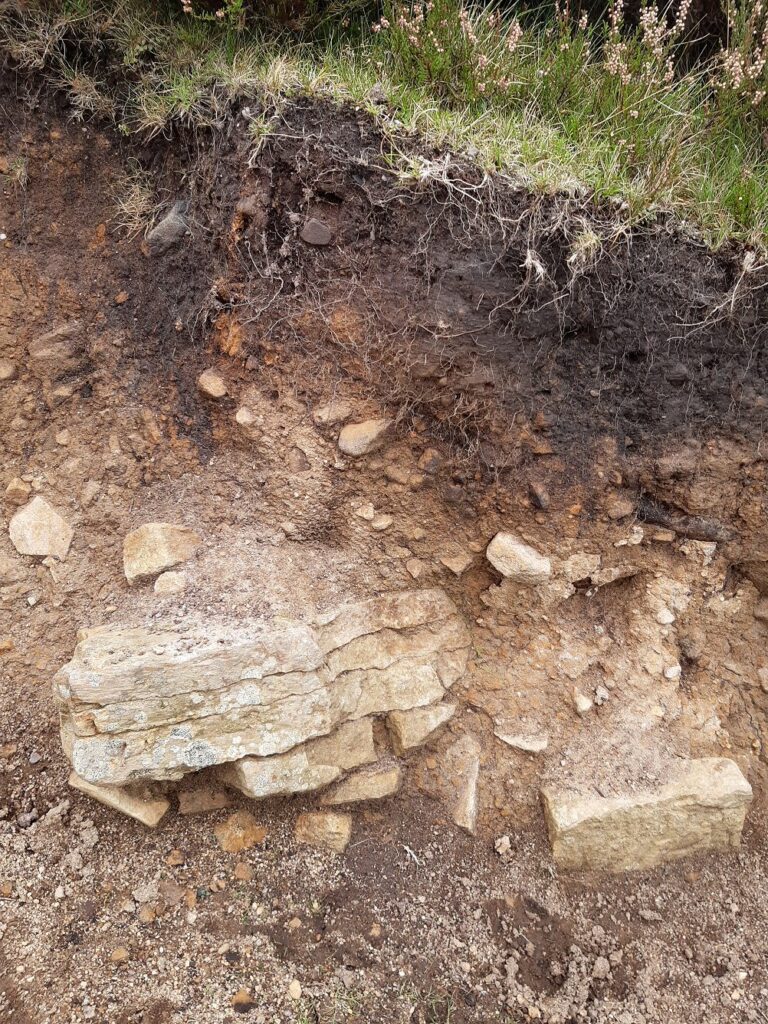
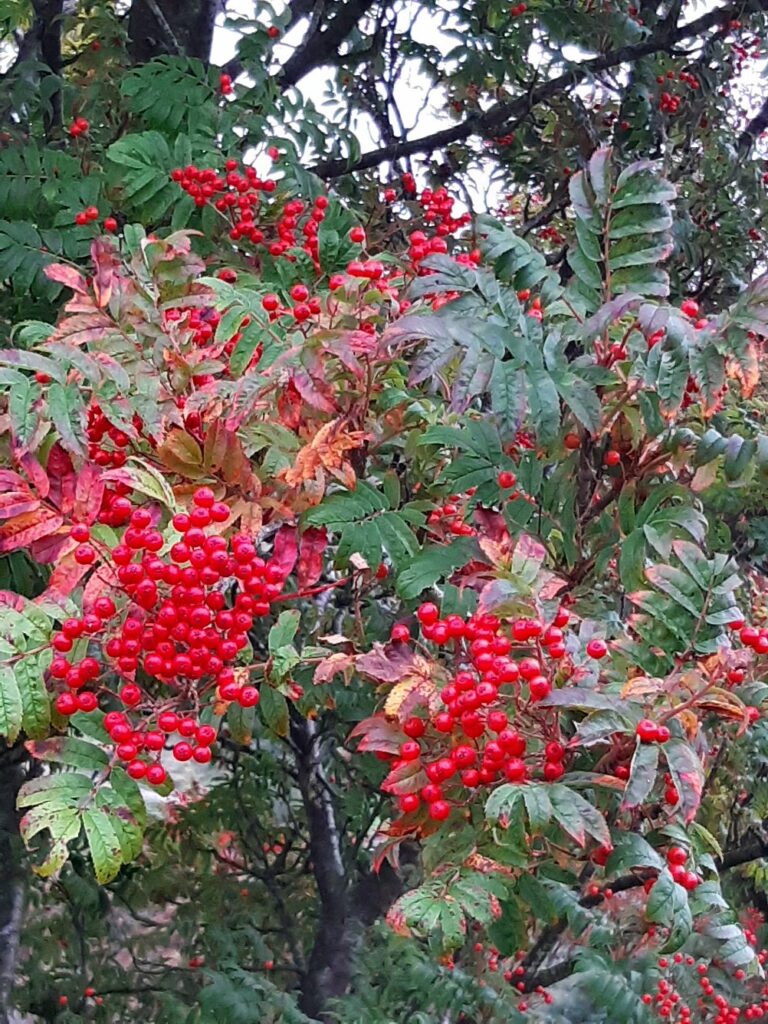
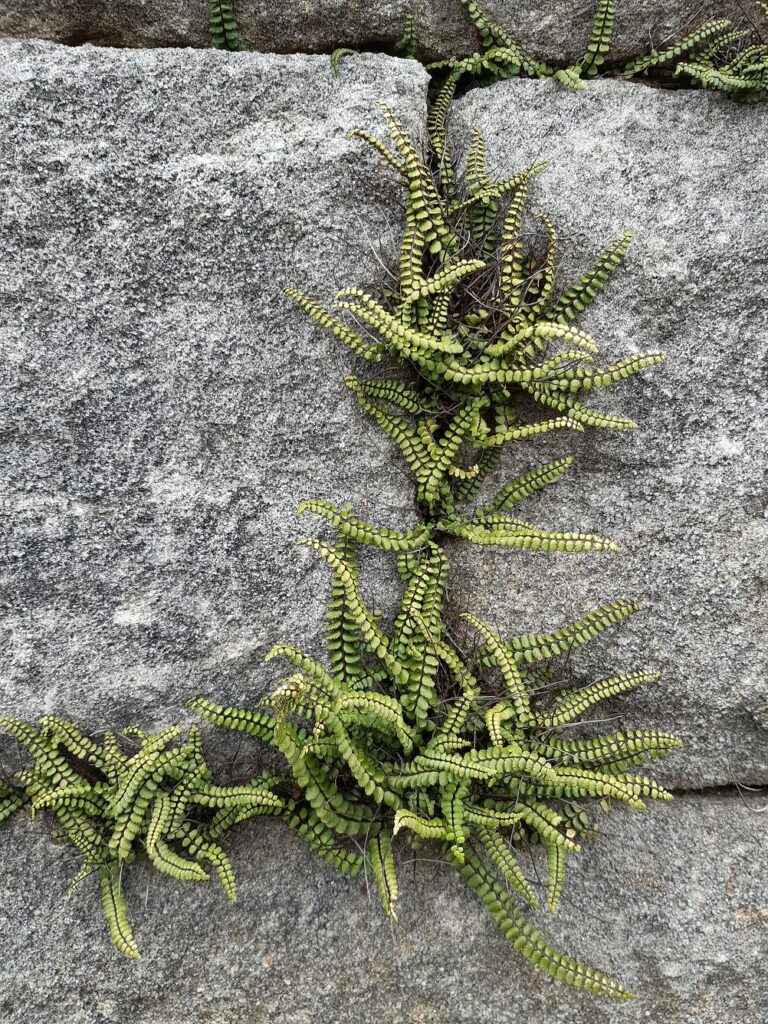
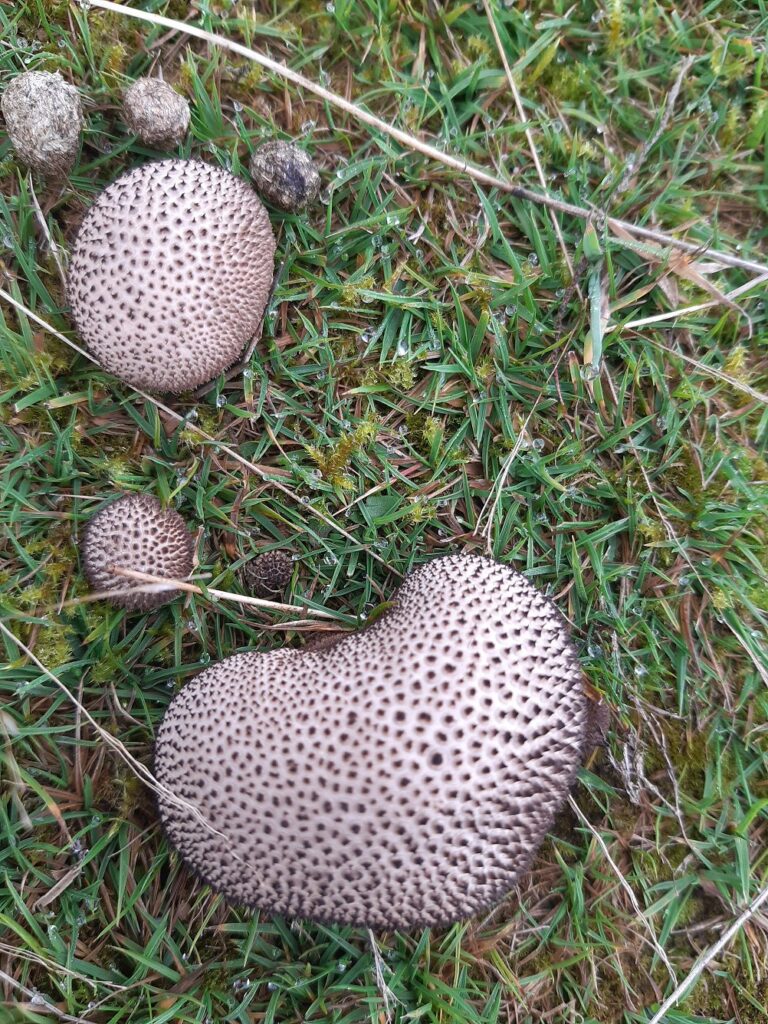
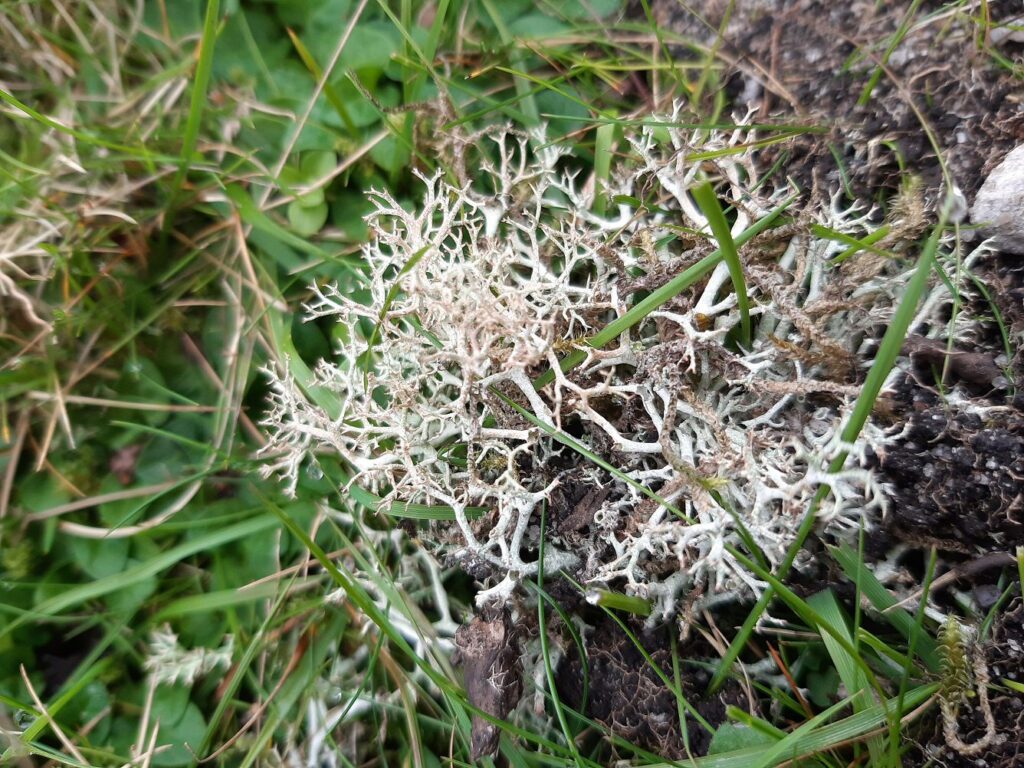
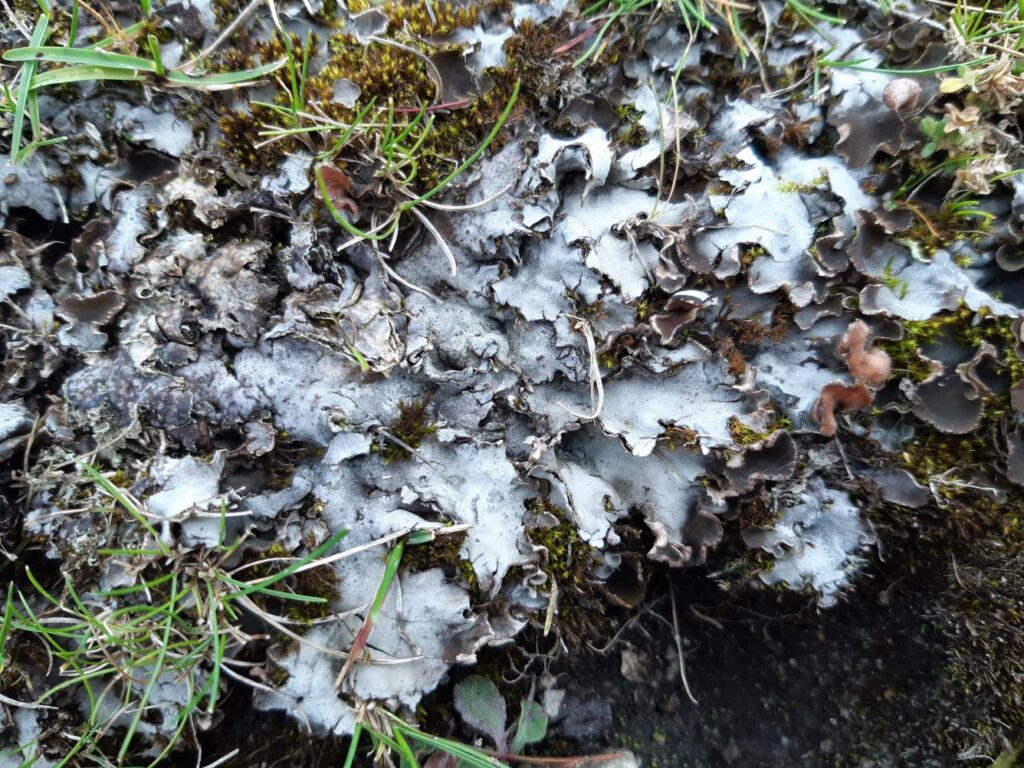
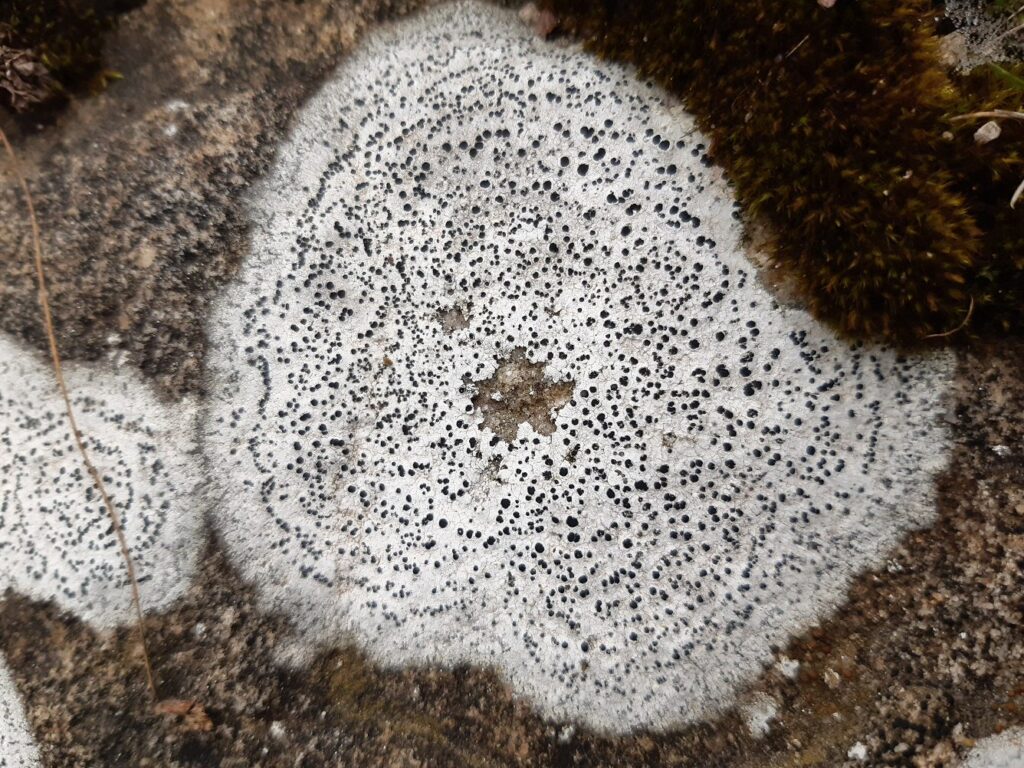
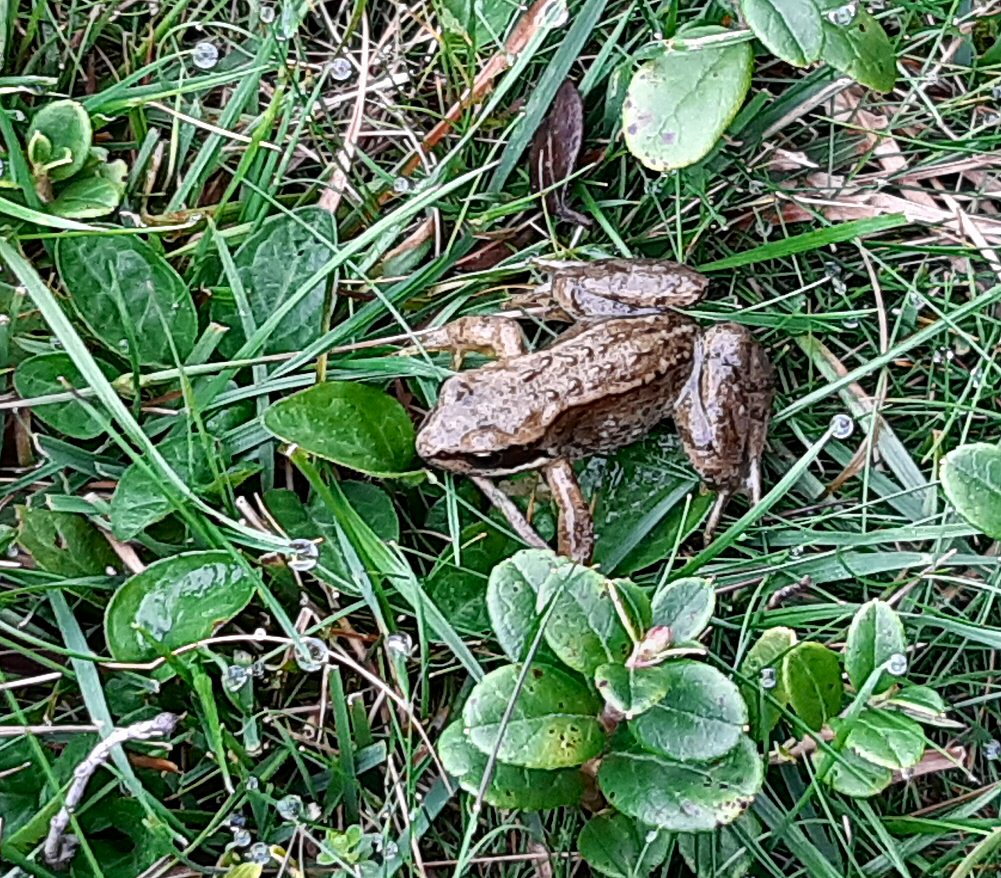

A very flowery Chiswick Police Station. Actually, it’s basically closed, at least as a real station for police and public, but the Hammersmith force camp out in it when they’re in the area. It’s going to be knocked down and redeveloped, but meanwhile, Karen Liebreich (left) of Abundance London (van, sign on the blue platform) has decorated it with a lot of army surplus camouflage scrim and a vast number of little flowers and butterflies … rather nice, I think. BTW the decorations were made by a lot of local artists, some of them presumably famous … if you’re quick you can bid for any of them!

I cycled to Kew, showed my card at the gate, told the cashier how nice it was to be able to arrive without booking (the lockdown booking requirement having finally been dropped), and sauntered across the lawns and through the trees of the quiet autumnal gardens, trying to recall how to distinguish two magnificent ancient tree species, the swamp cypress and the dawn redwood ………
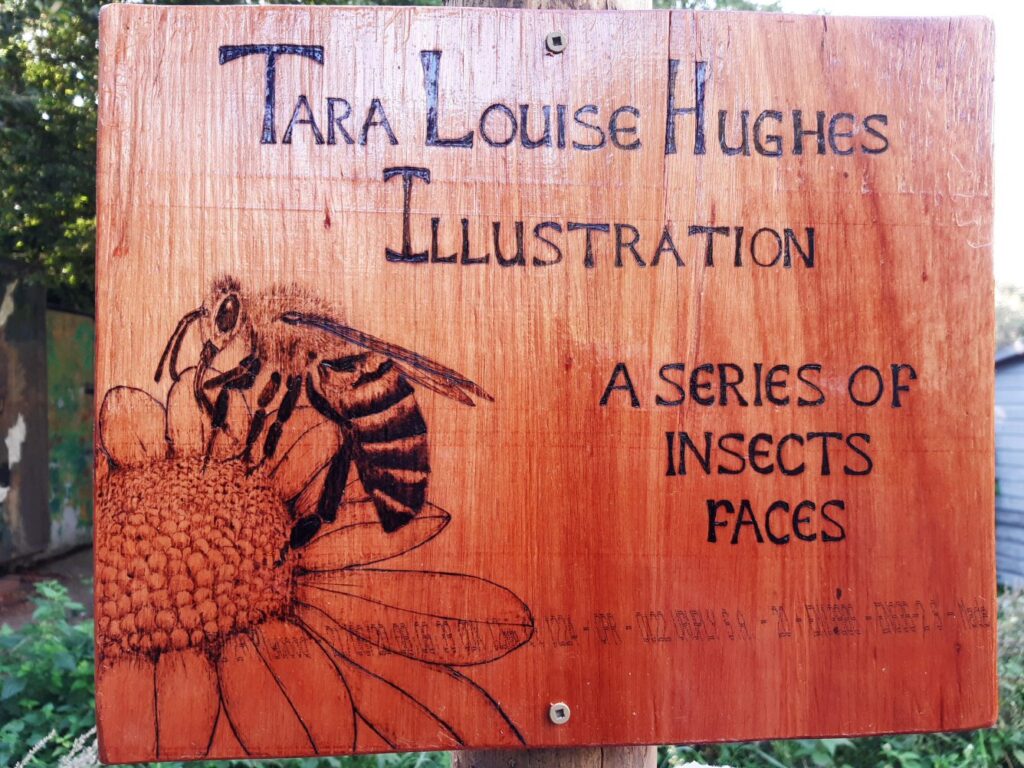
The Gunnersbury Triangle nature reserve this autumn has a new and wonderful nature trail: a series of insects’ faces by Tara Louise Hughes. Tara, when not studying art and illustration, has proven herself a capable conservation volunteer. Now, she has brightened up the reserve for children and adults with her painstakingly fire-etched close-up drawings of insects.

Her damselfly head is a study in miniature detail: the hundreds of pin-point eye-elements (ommatidia) in the insect’s large, forward-facing eyes; the precise distribution and length of the bristles on the top of the head and on the mouthparts; the accurately-observed antennae.
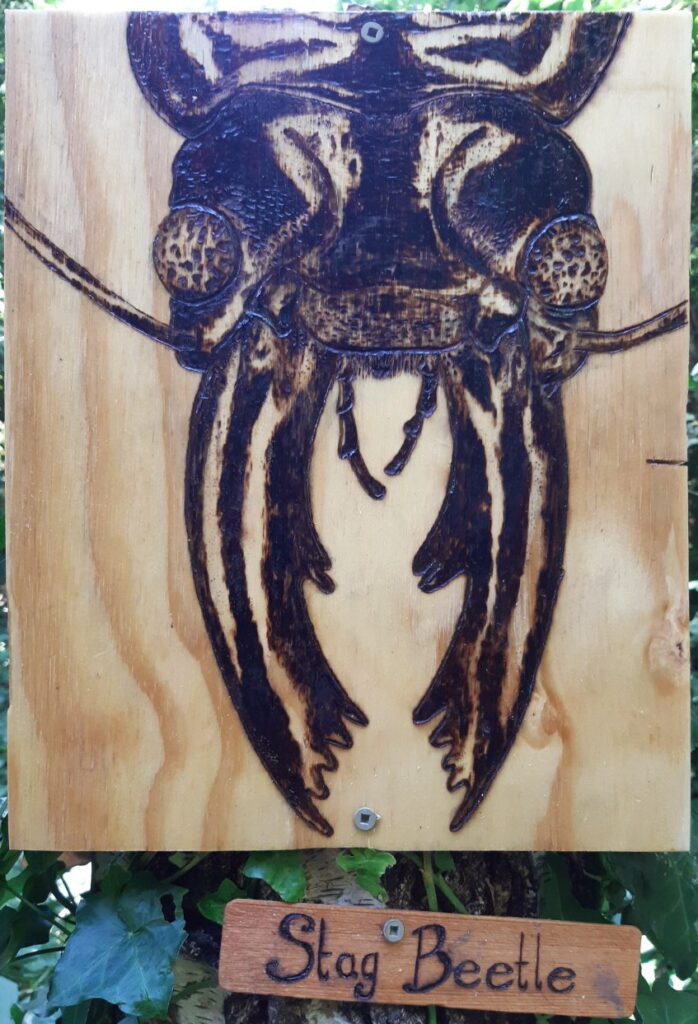
The Stag Beetle head is suitably fearsome, a study in armoured magnificence with interlocking chitin cases for head and thorax, and those extraordinary antler-like mandibles.
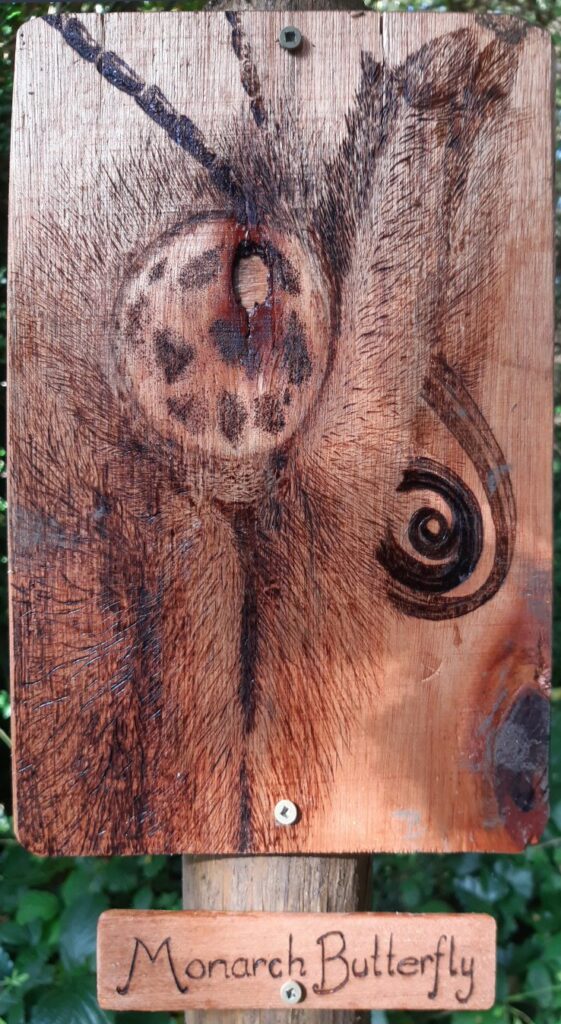
The Monarch Butterfly’s head couldn’t be more different: a study of a delicately furry head, a shy eye, and the tenderly coiled proboscis peeping out on the right.
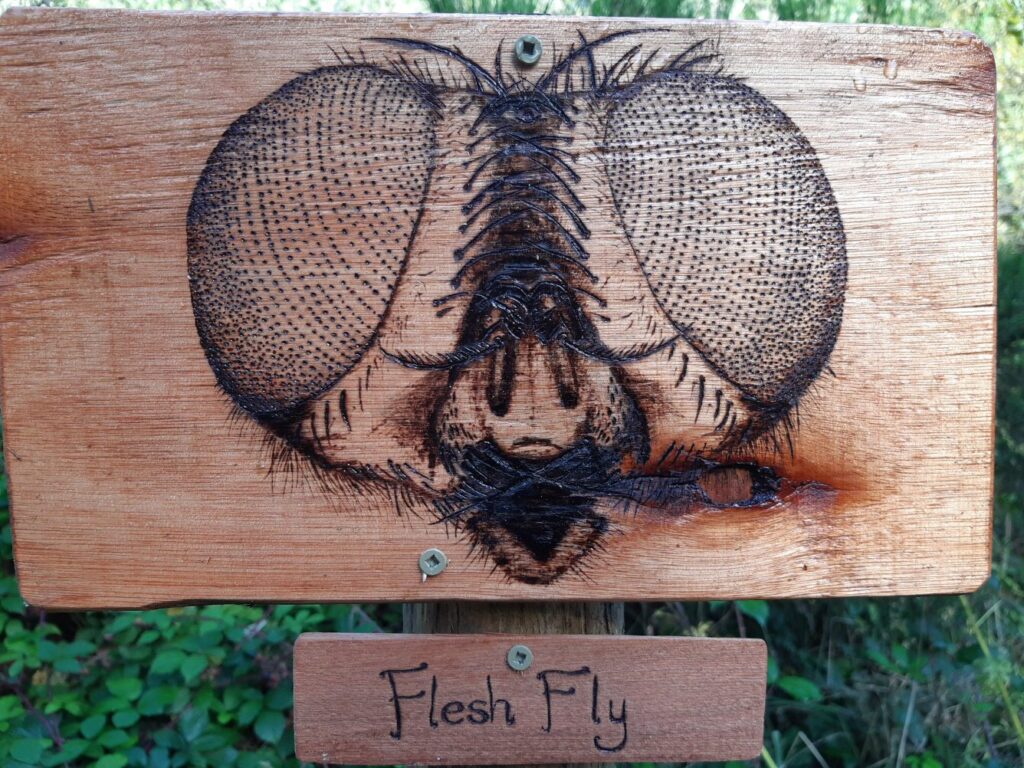
With the Flesh Fly we’re certainly back in scary territory, the rows of stiffly corseted bristles announcing that this insect is ready for action.
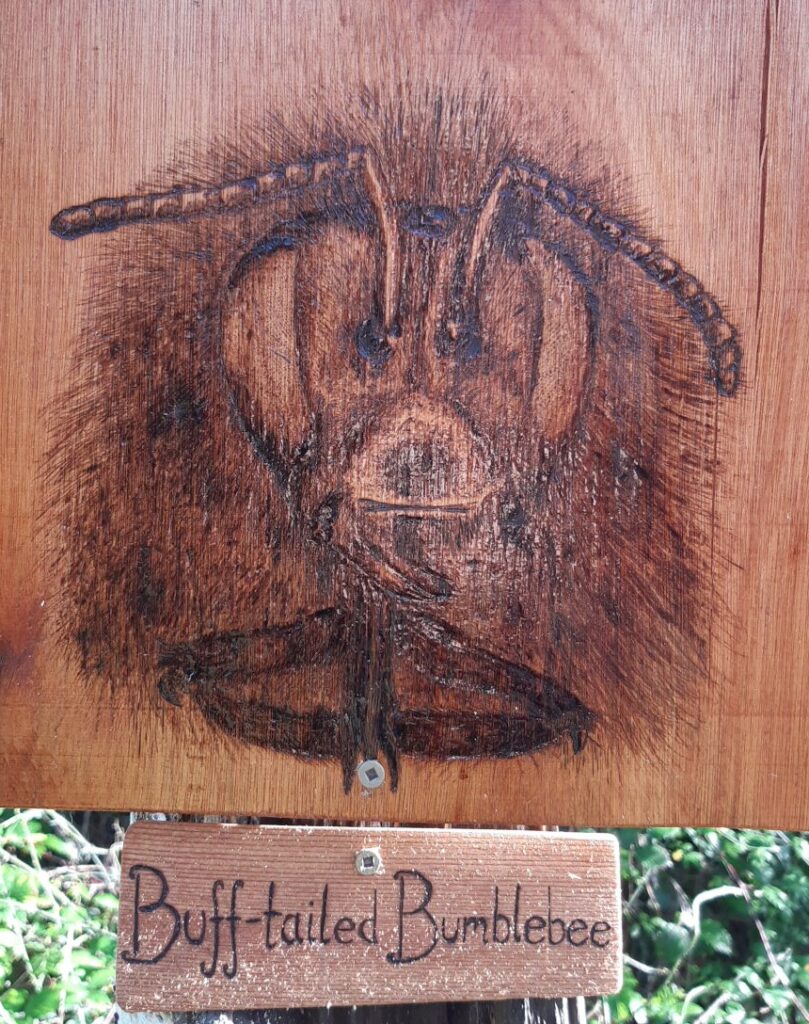
The Buff-tailed Bumblebee, a mild and welcome presence in the reserve, and in gardens wherever there is a suitable supply of flowers. The furry insect seems shy under the artist’s gaze.
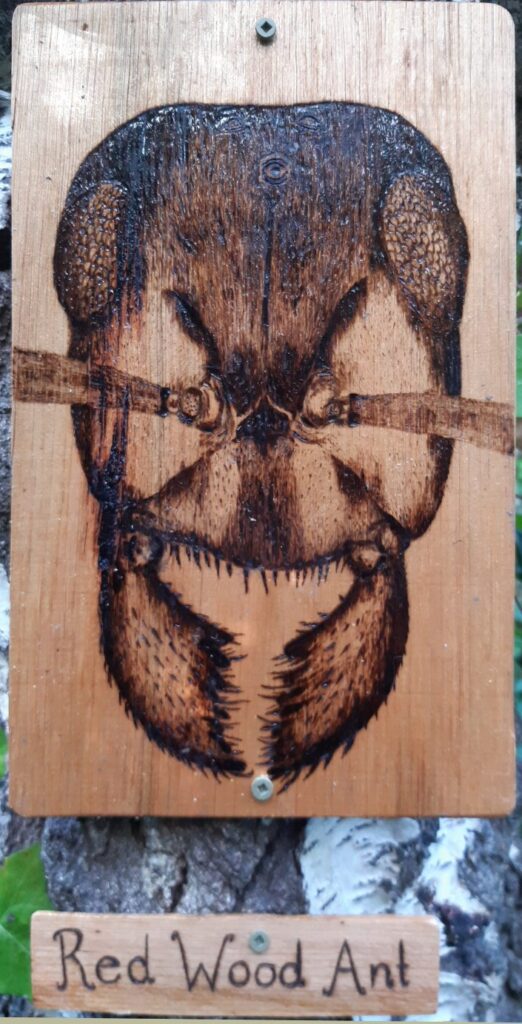
If not evil, the Red Wood Ant is definitely fierce and single-minded, as anyone who’s ever been bitten by one can testify. Tara’s fire-etching has brilliantly captured that take-no-prisoners energy with the insect’s smooth bullet head, businesslike antennae, and efficiently-hinged jaws. Take a careful look at those scorched textures at the top of its head.
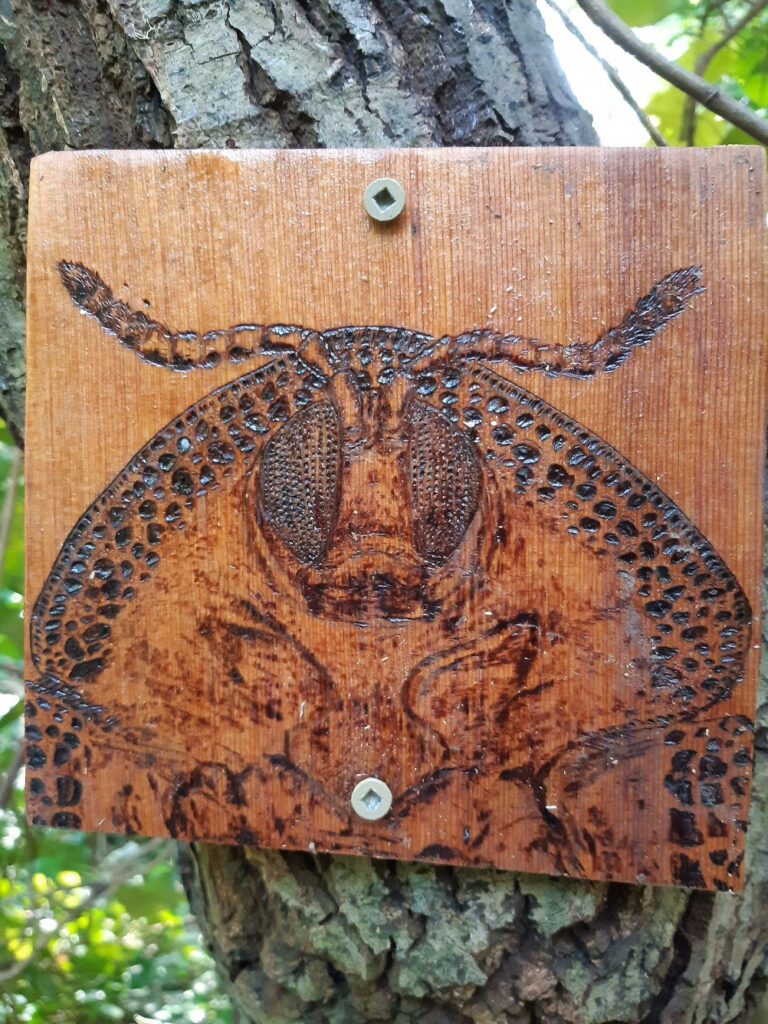
Tara’s Tortoise Beetle shows the distinctly tortoise-like carapace from the underside, its knobbly texture skilfully burnt into the wood, the little head jutting out under the curved rim with the antennae cautiously feeling the outside world for possible danger.
Tara’s website is at https://taralouisehughes.medium.com/
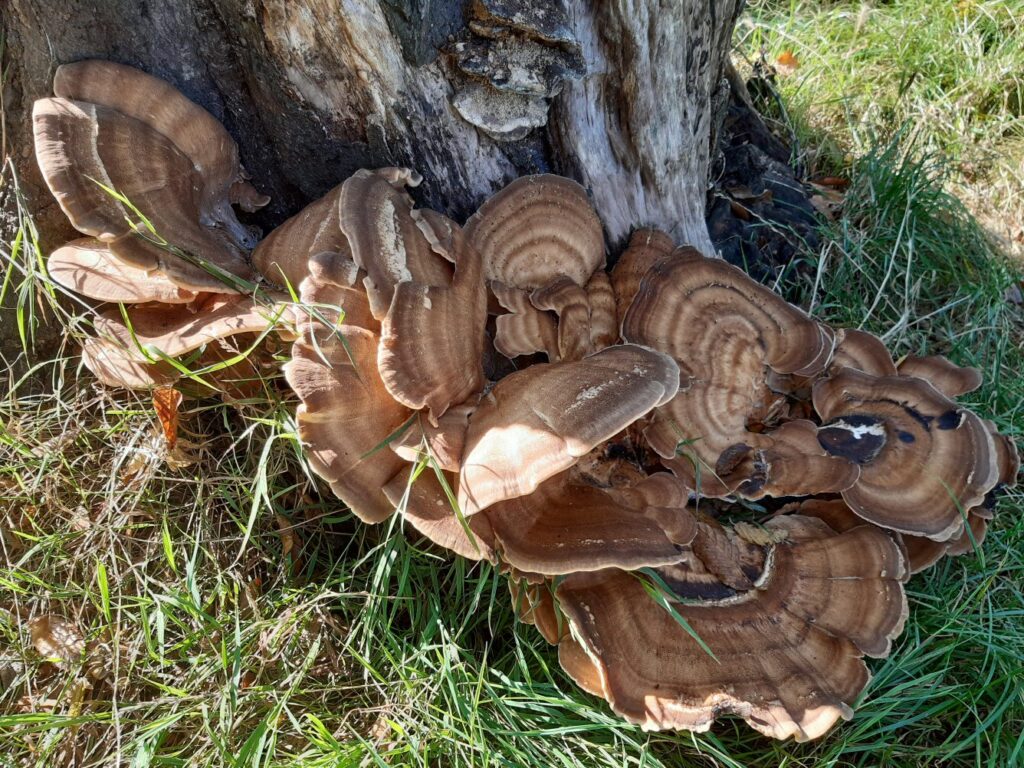
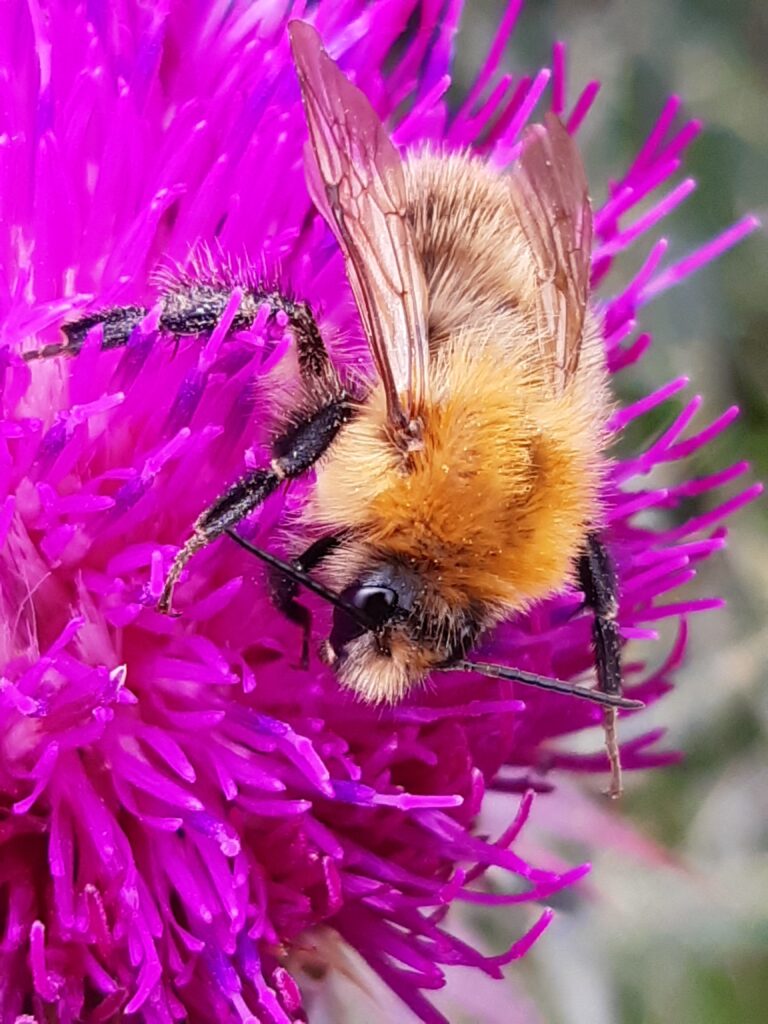
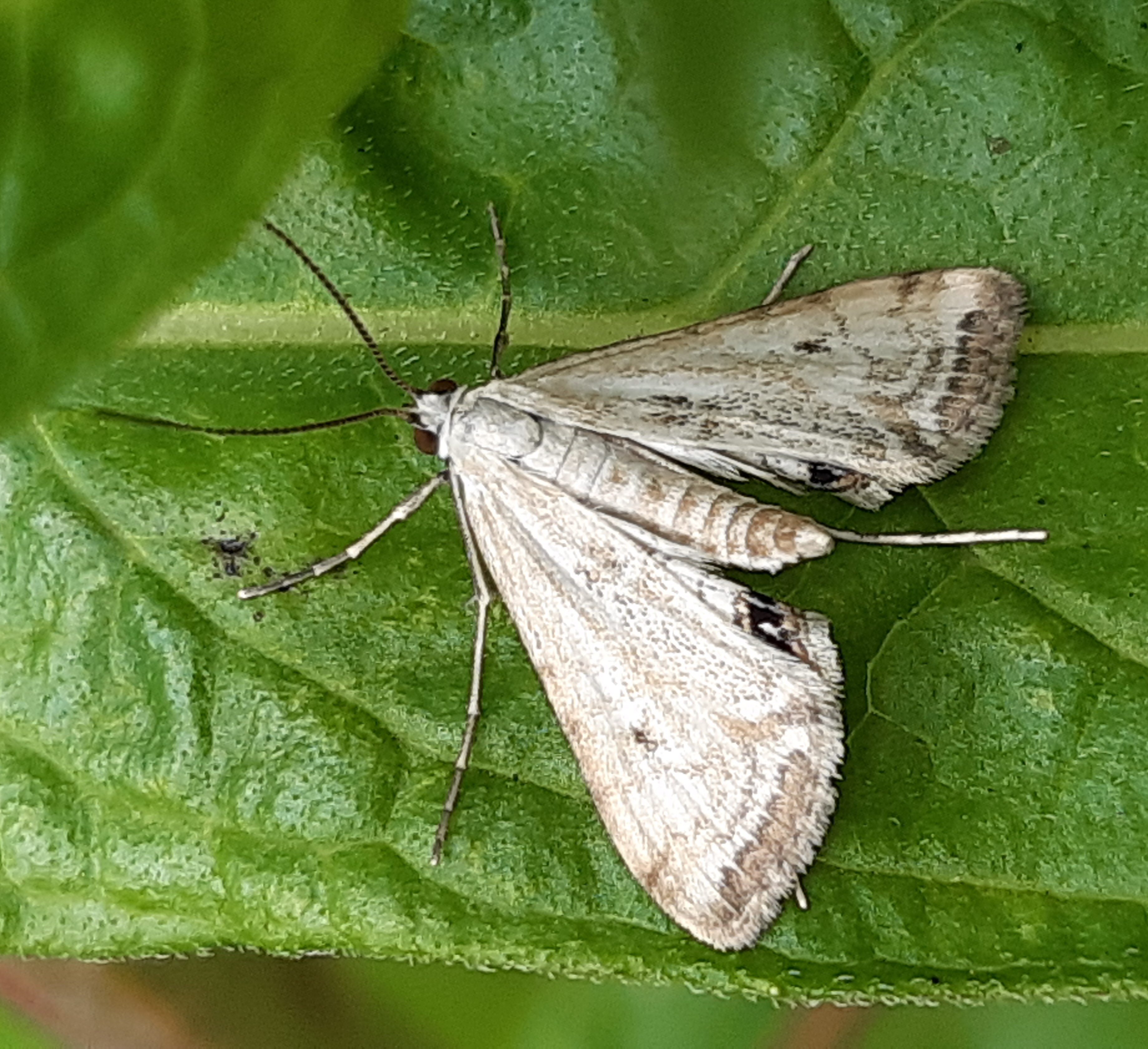
This pretty little moth looks white at first glance, but it isn’t, exactly. There’s a small black spot near the middle of the wing; a slightly checkered border; and a row of black marks with little blue spots near the outer edge of the hind wing. The caterpillars feed on duckweed, so the adults are always near water. This one was just by the boardwalk over the main pond at Gunnersbury Triangle.
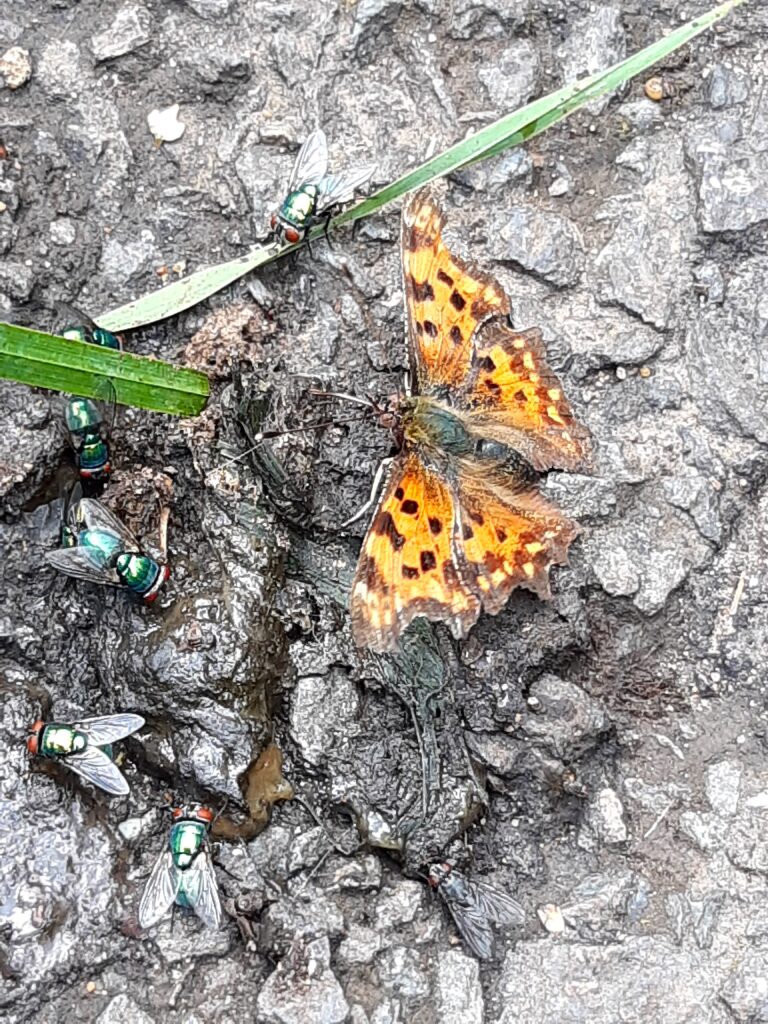
Ah, a Comma butterfly on the path. Ew, but what’s it doing? Those are flies. Greenbottles. With red eyes. They’re buzzing around a sticky mess. Dog or Fox poo. And, yes, the Comma has its proboscis extended, it’s feeding. On the poo, by preference. No better than the flies!
Actually, quite a few species of butterfly are attracted to sticky messes on the ground; entomologists brew up their own concoctions with beer and treacle (and who knows what else) to attract Purple Emperors down from the tops of their Oak trees.
Somehow this all seems surprising, perhaps because we can’t quite believe that anything so beautifully dressed as a butterfly could have such dirty habits. But then again, being attractive and well-dressed doesn’t guarantee that humans are doing nice things, either.
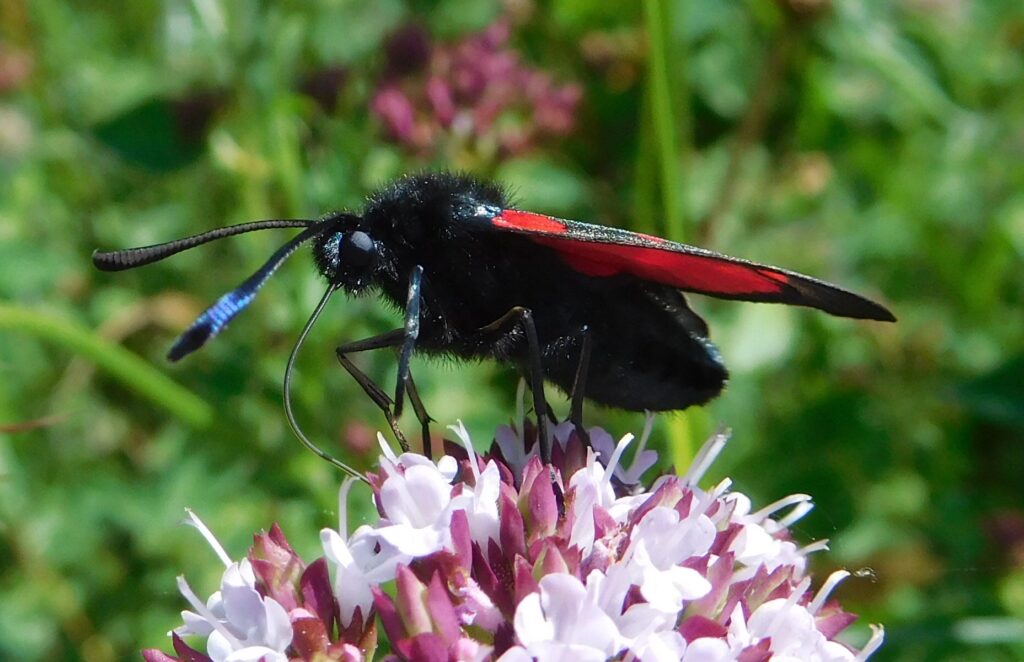
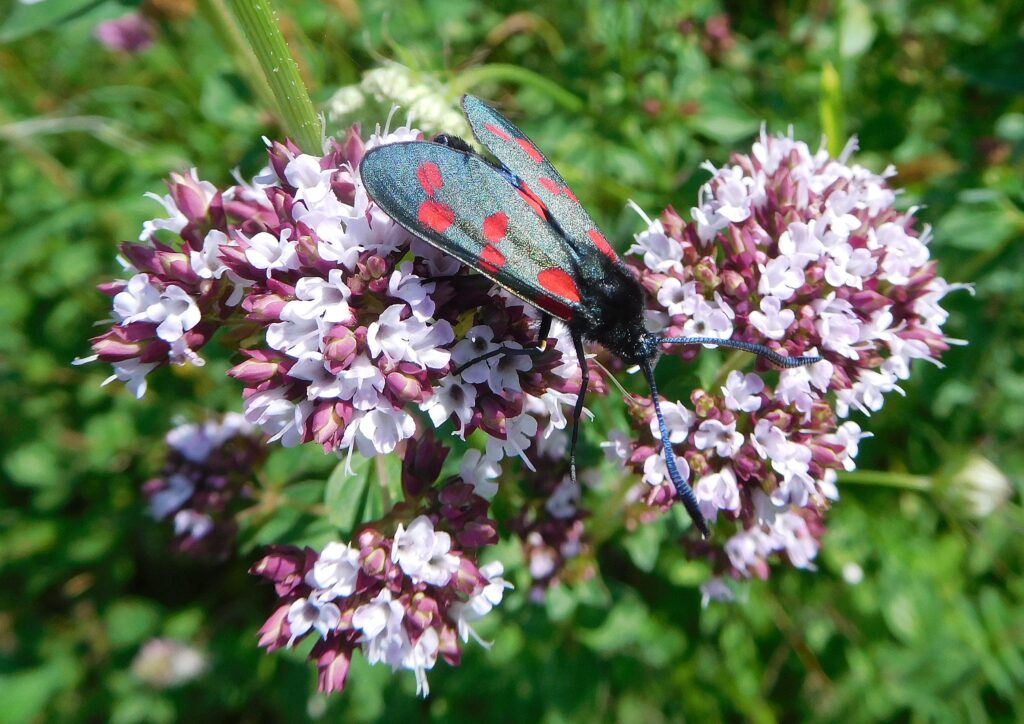
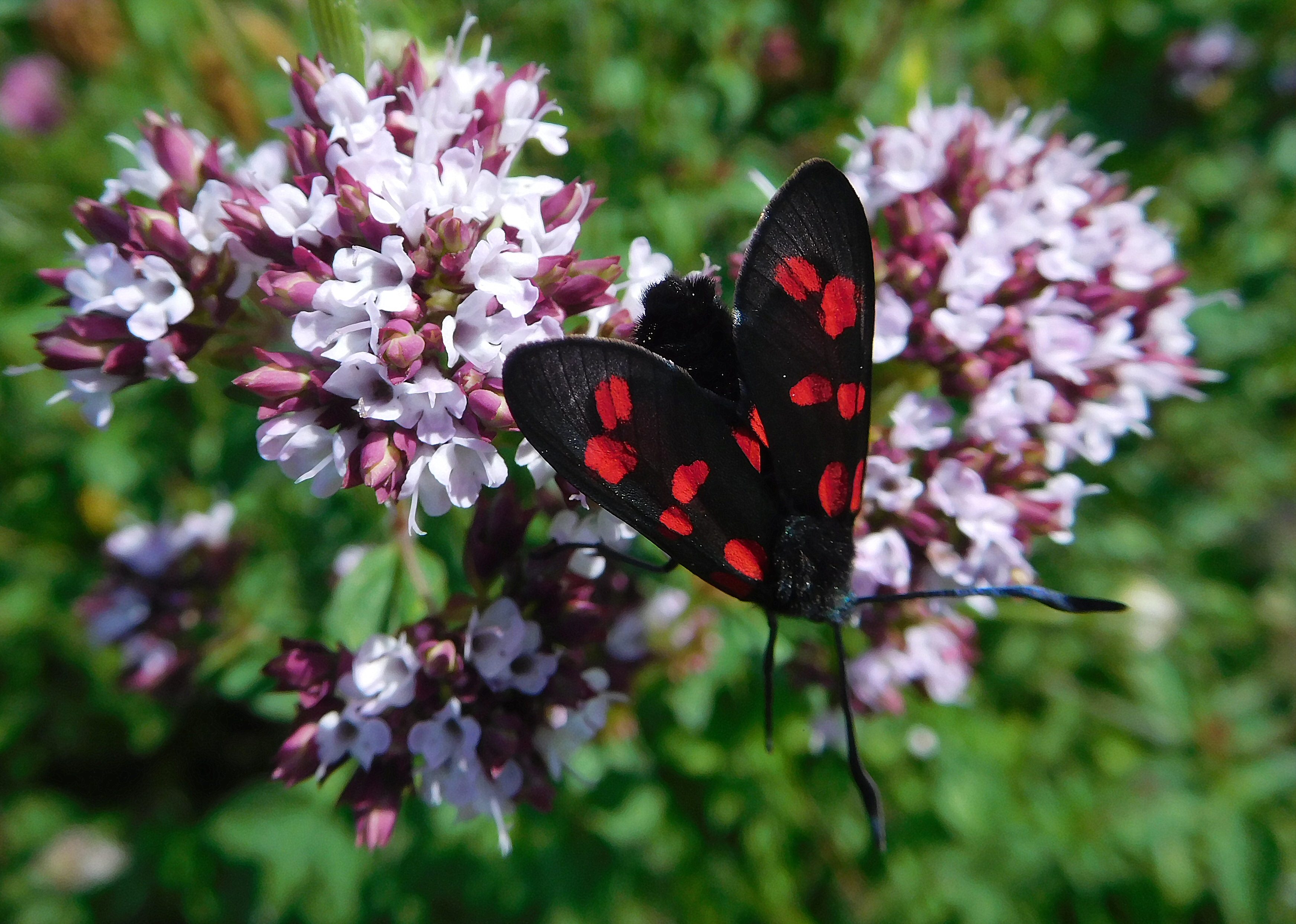
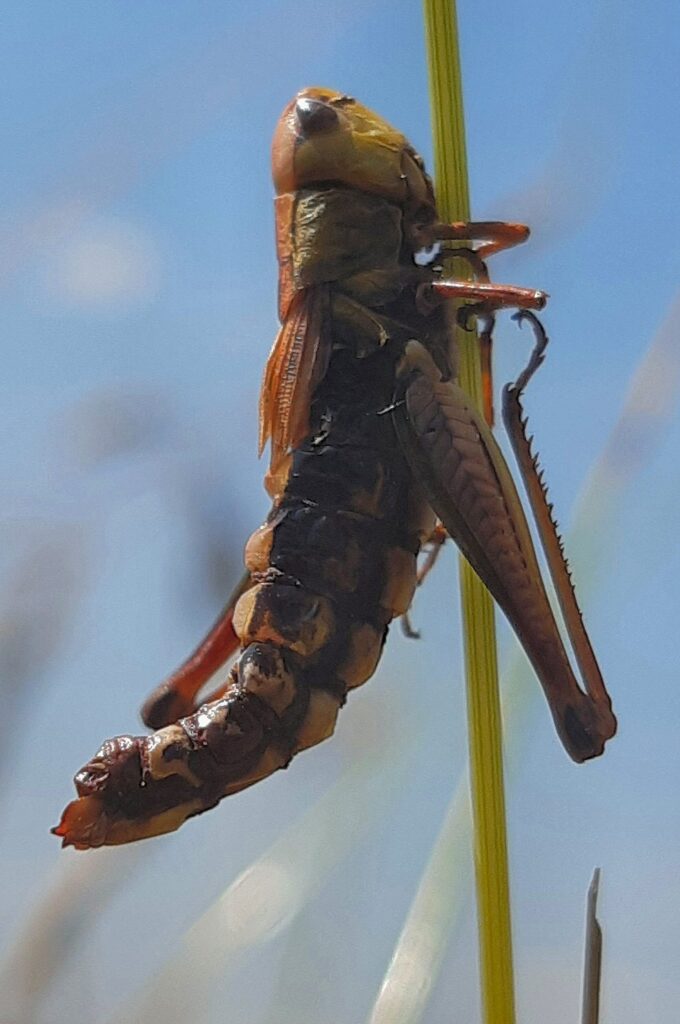
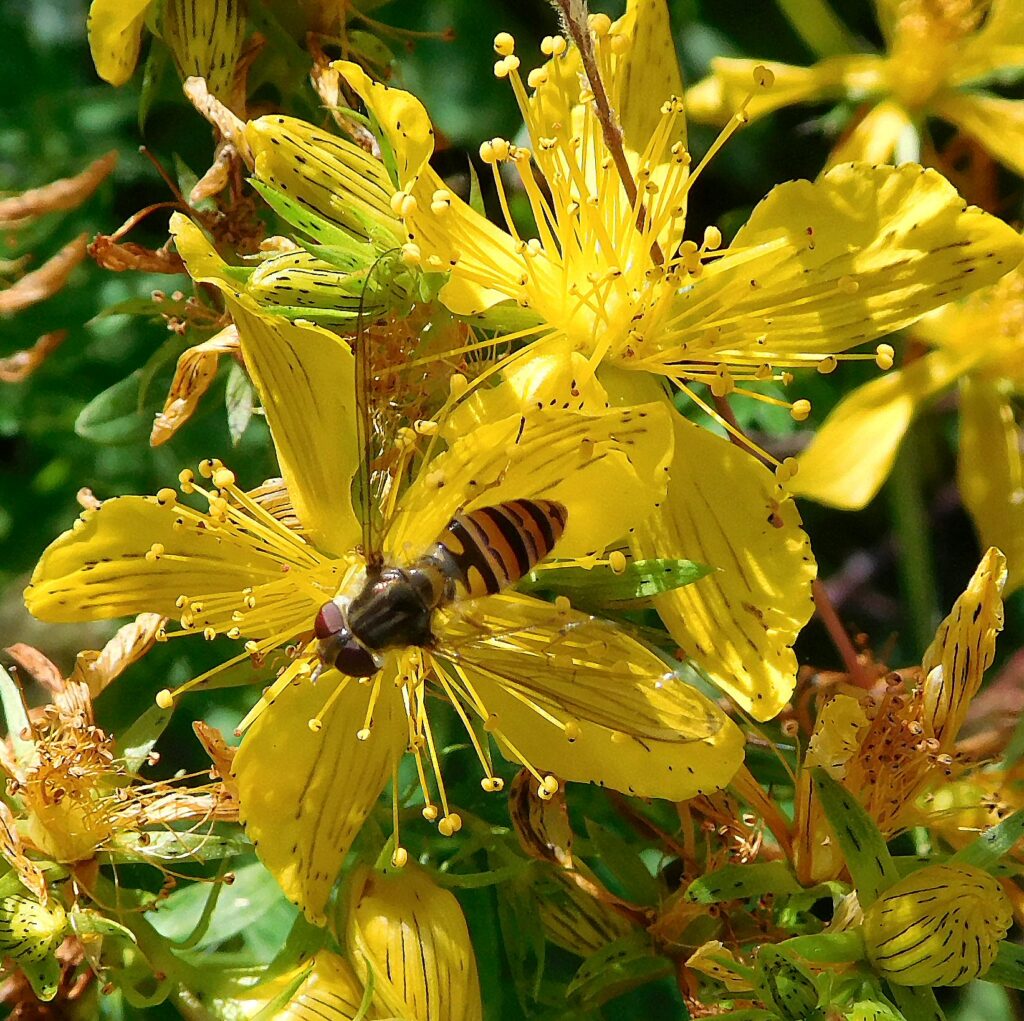
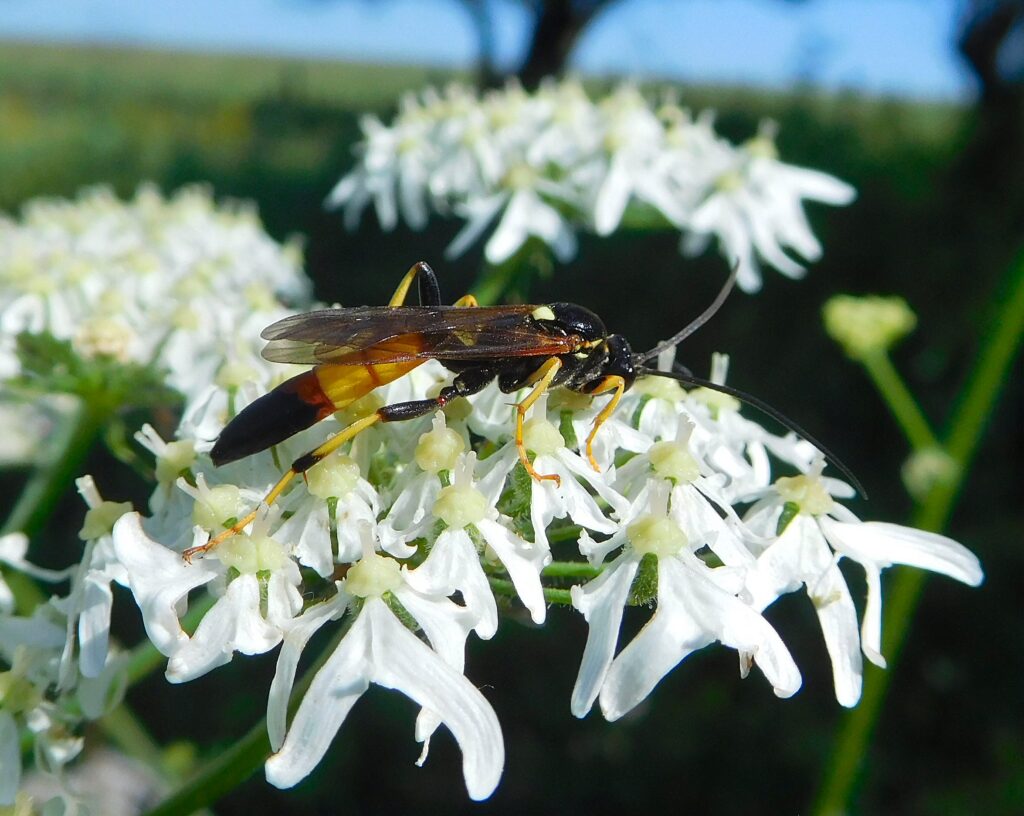
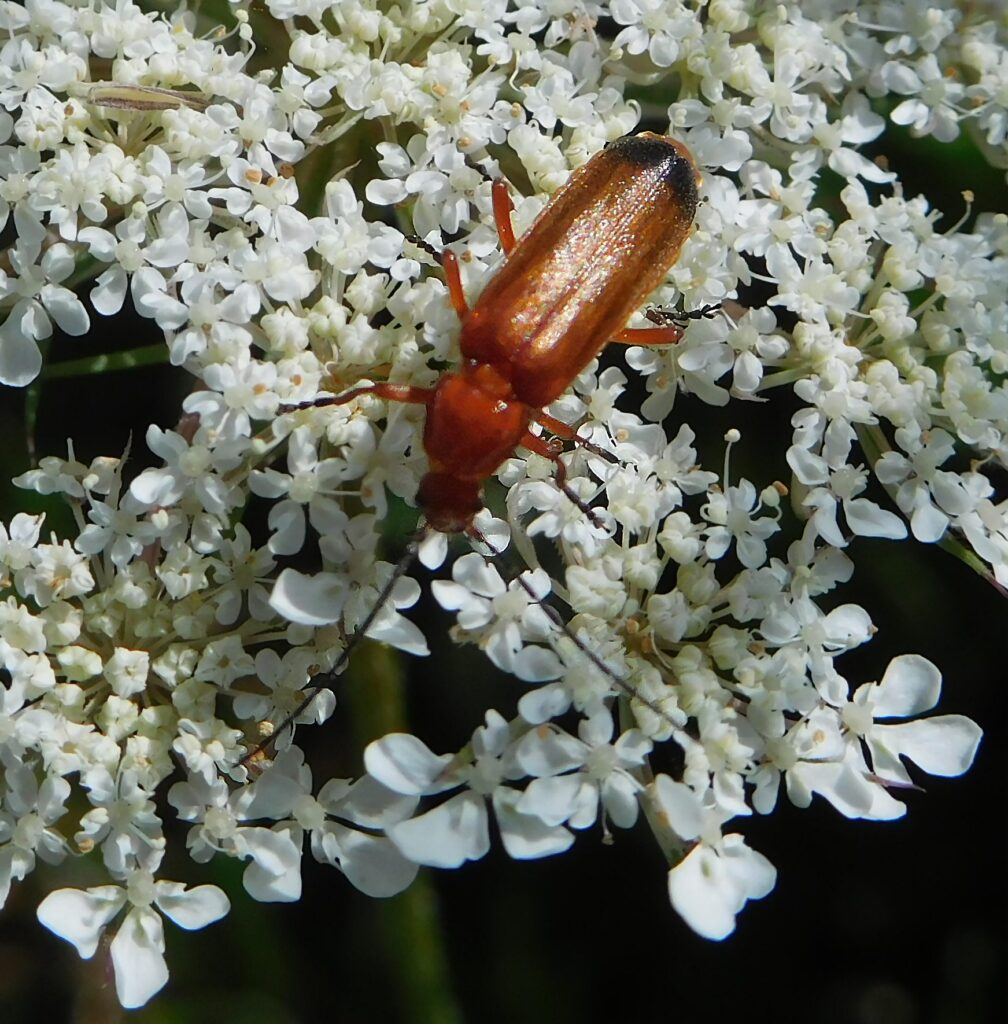
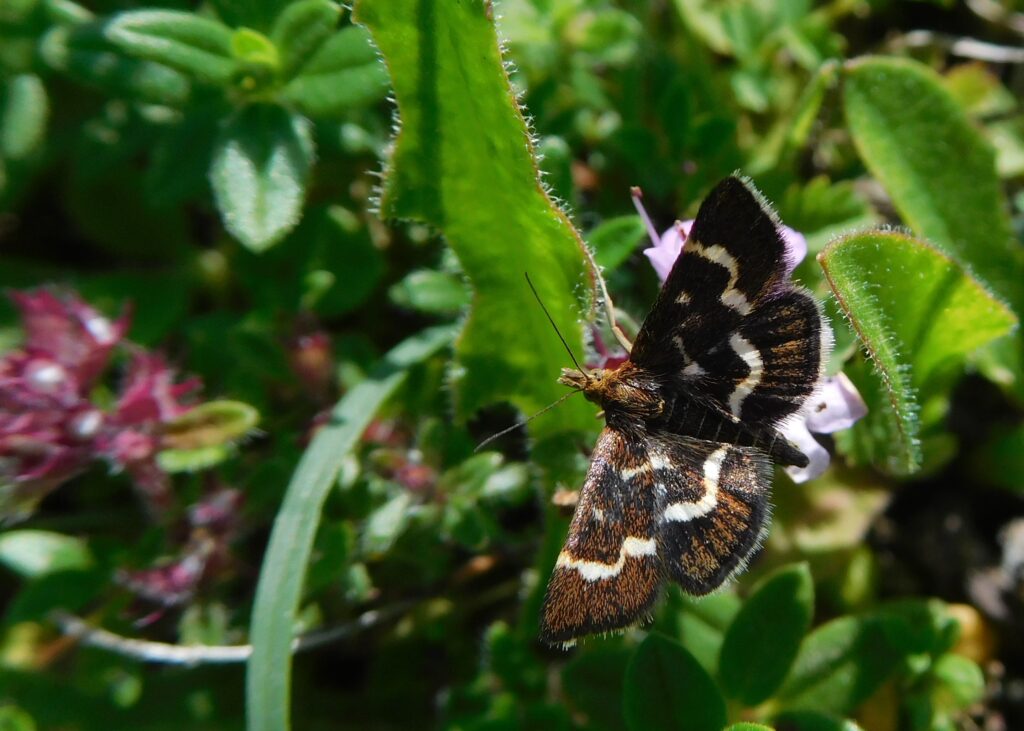
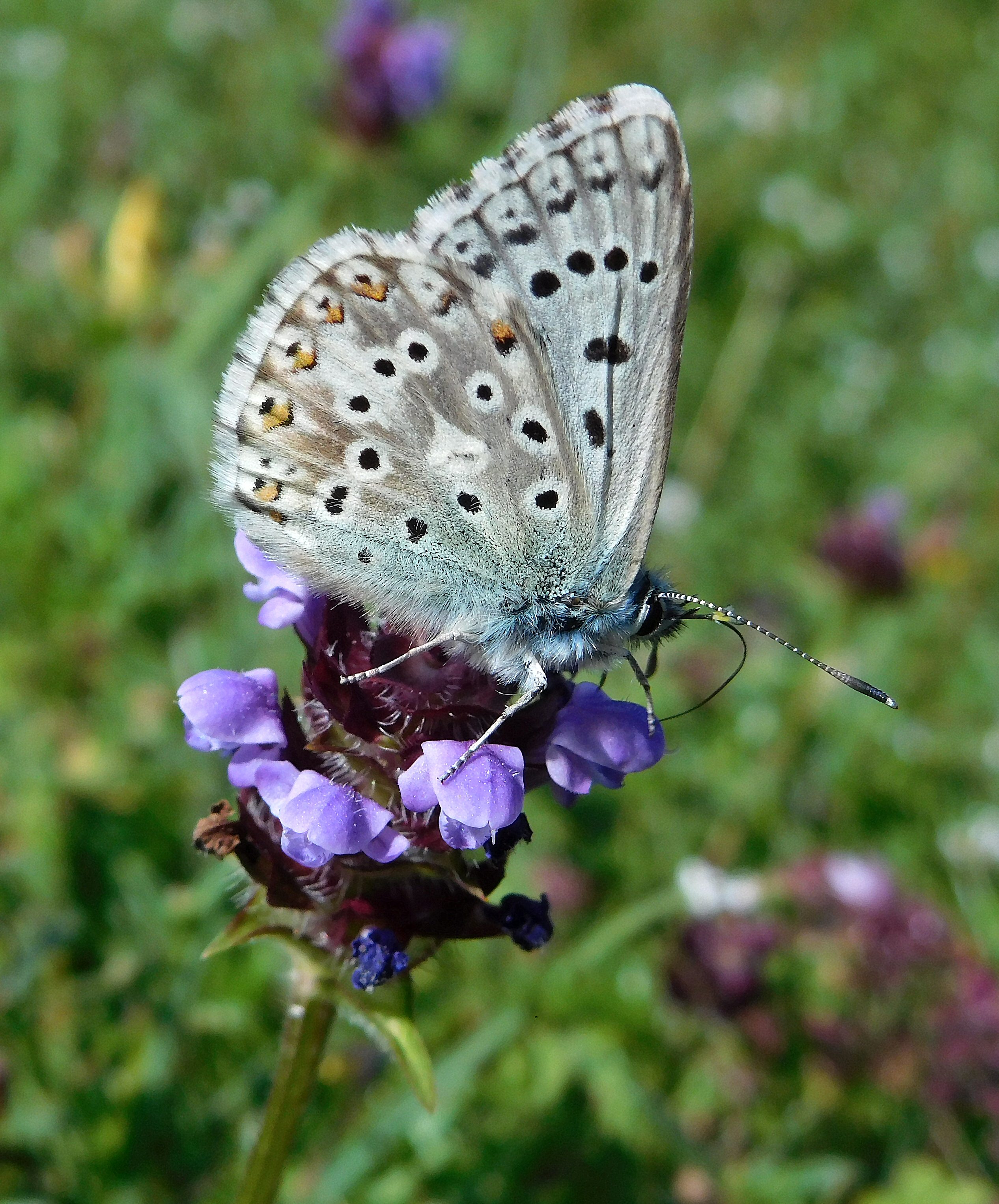
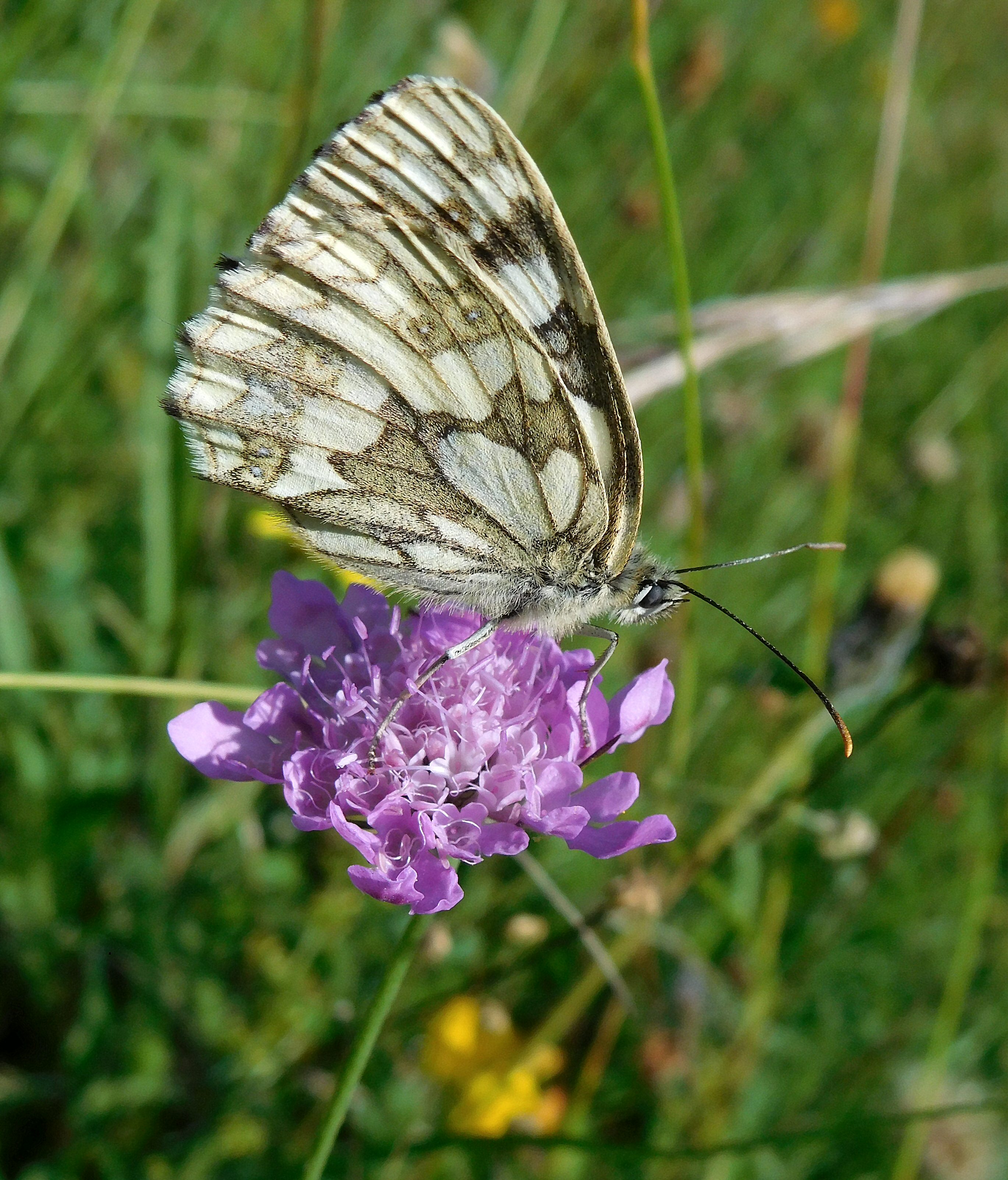
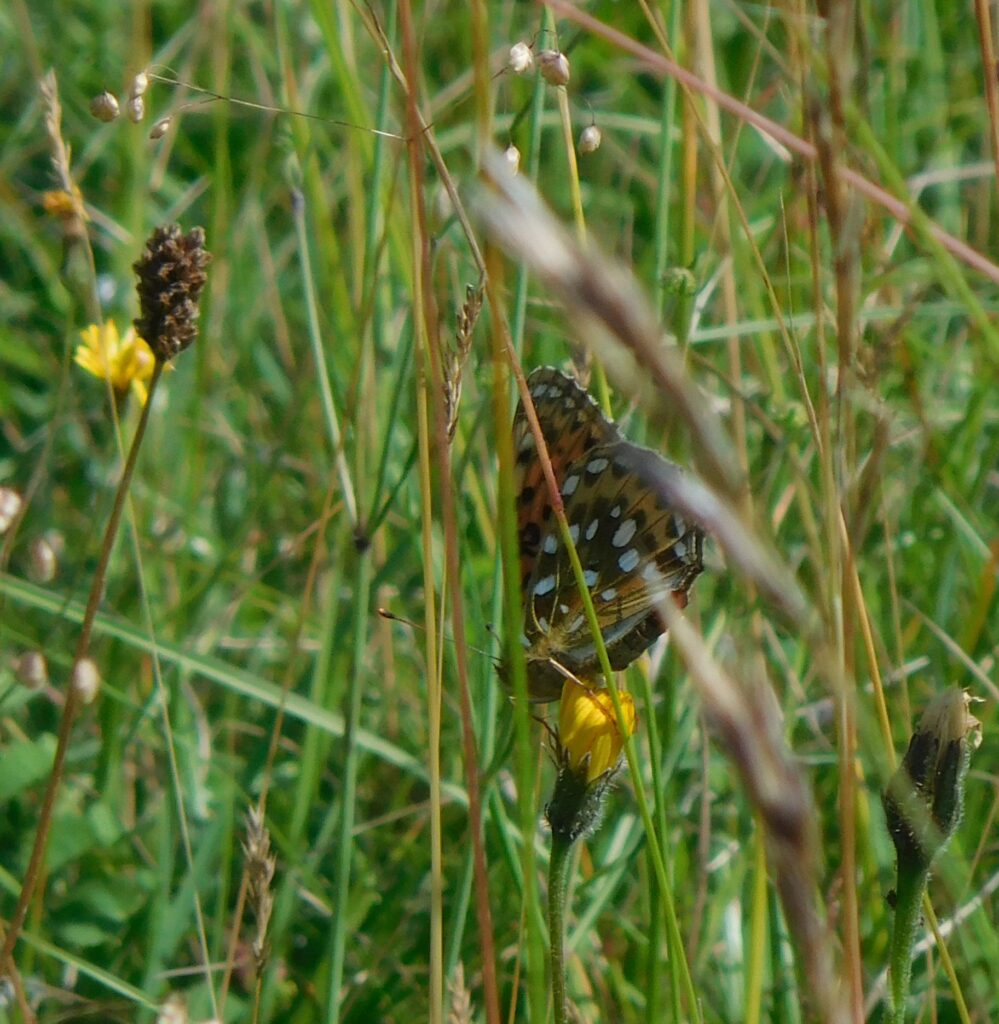
There were also Small Whites, Meadow Browns, Gatekeepers, Small Skippers, and possibly Chalkhill Blues about.

